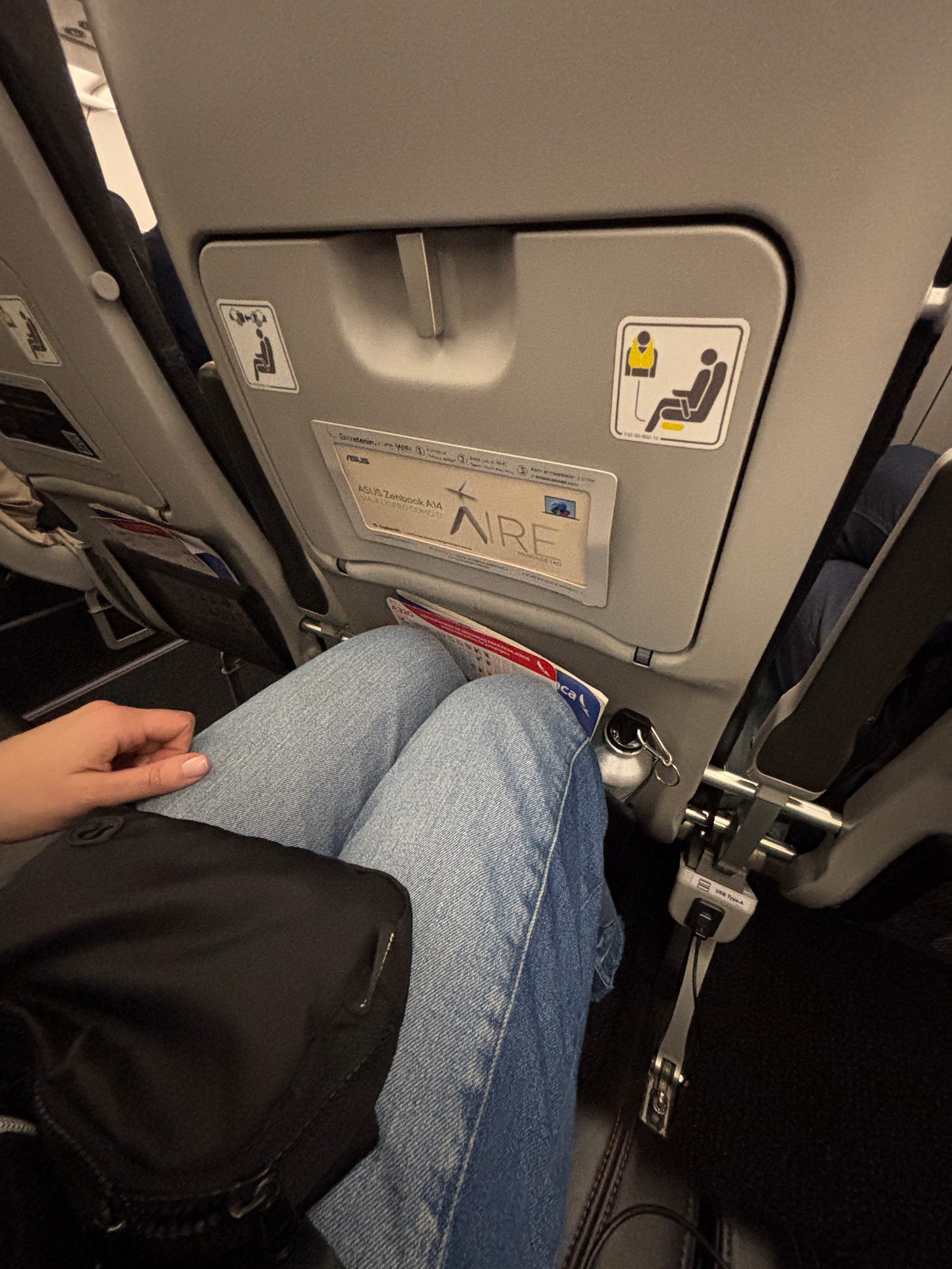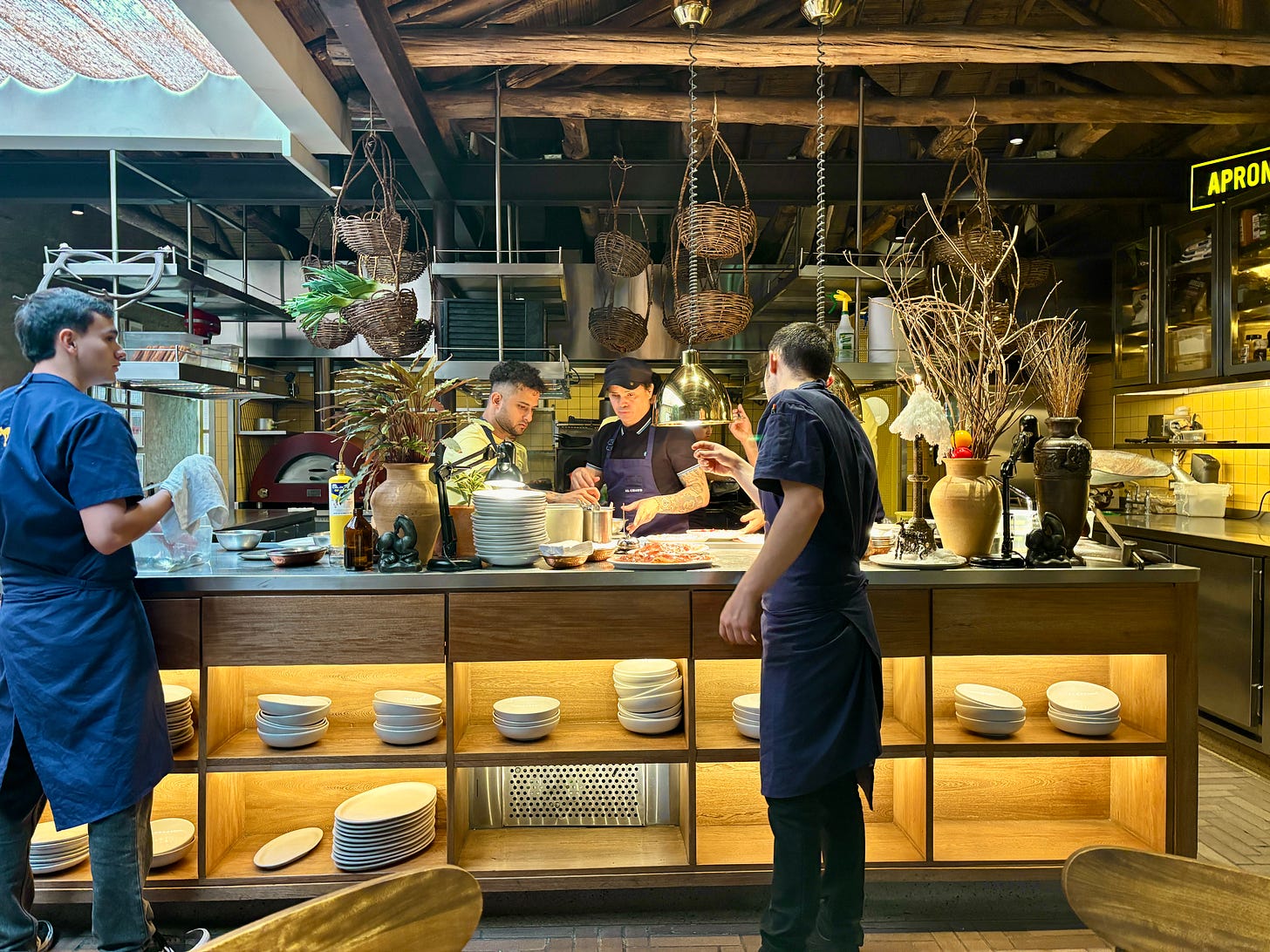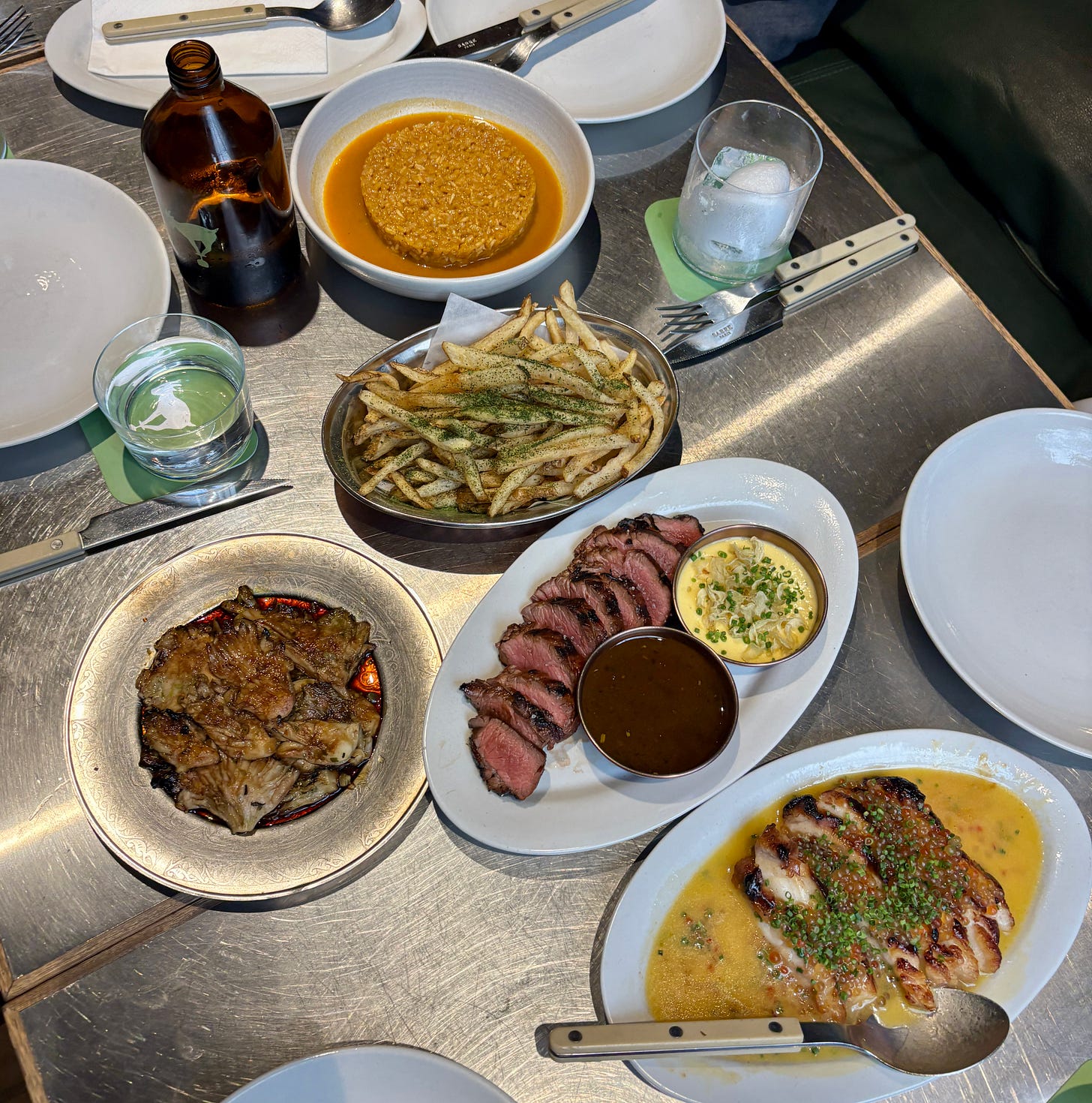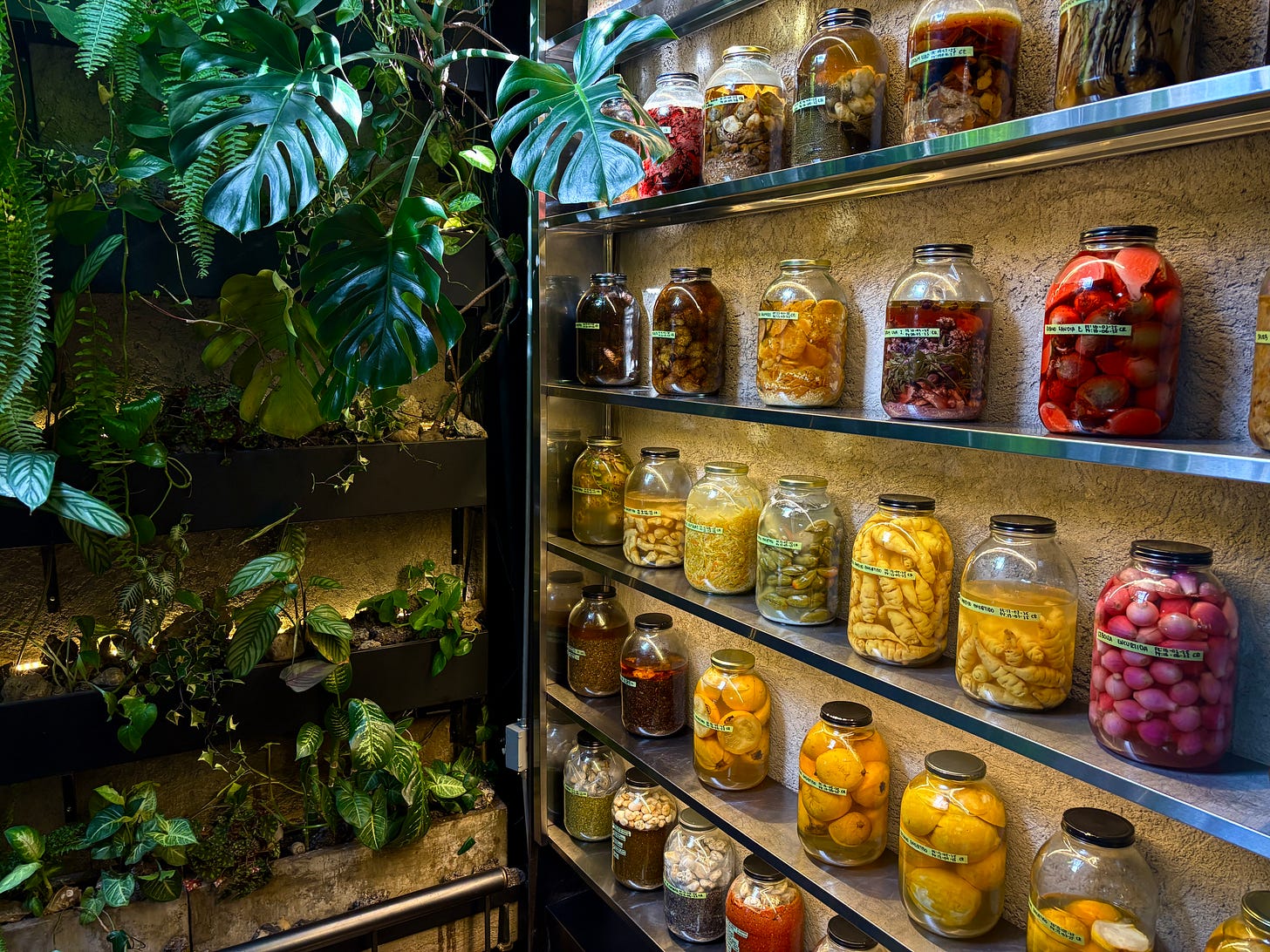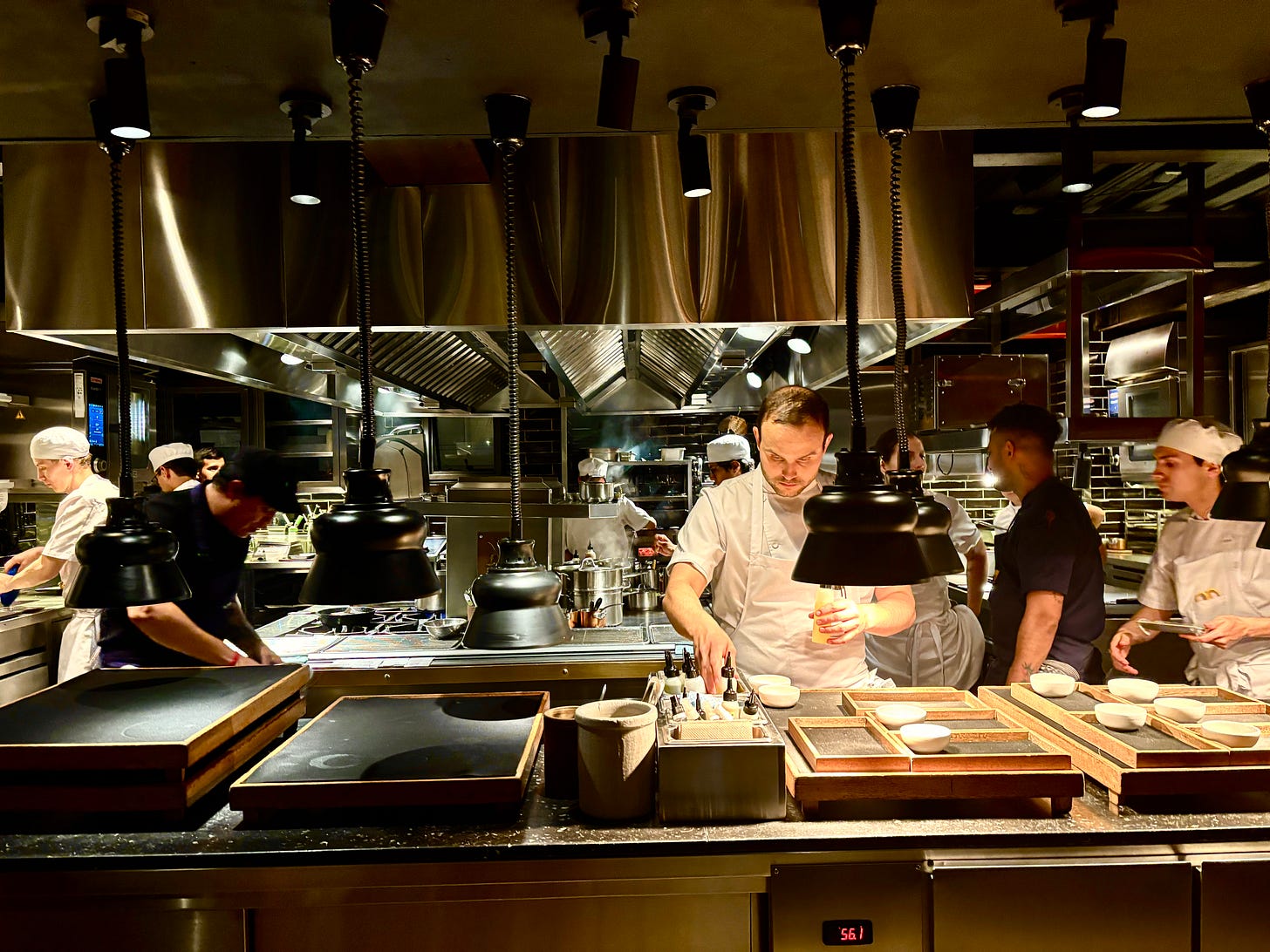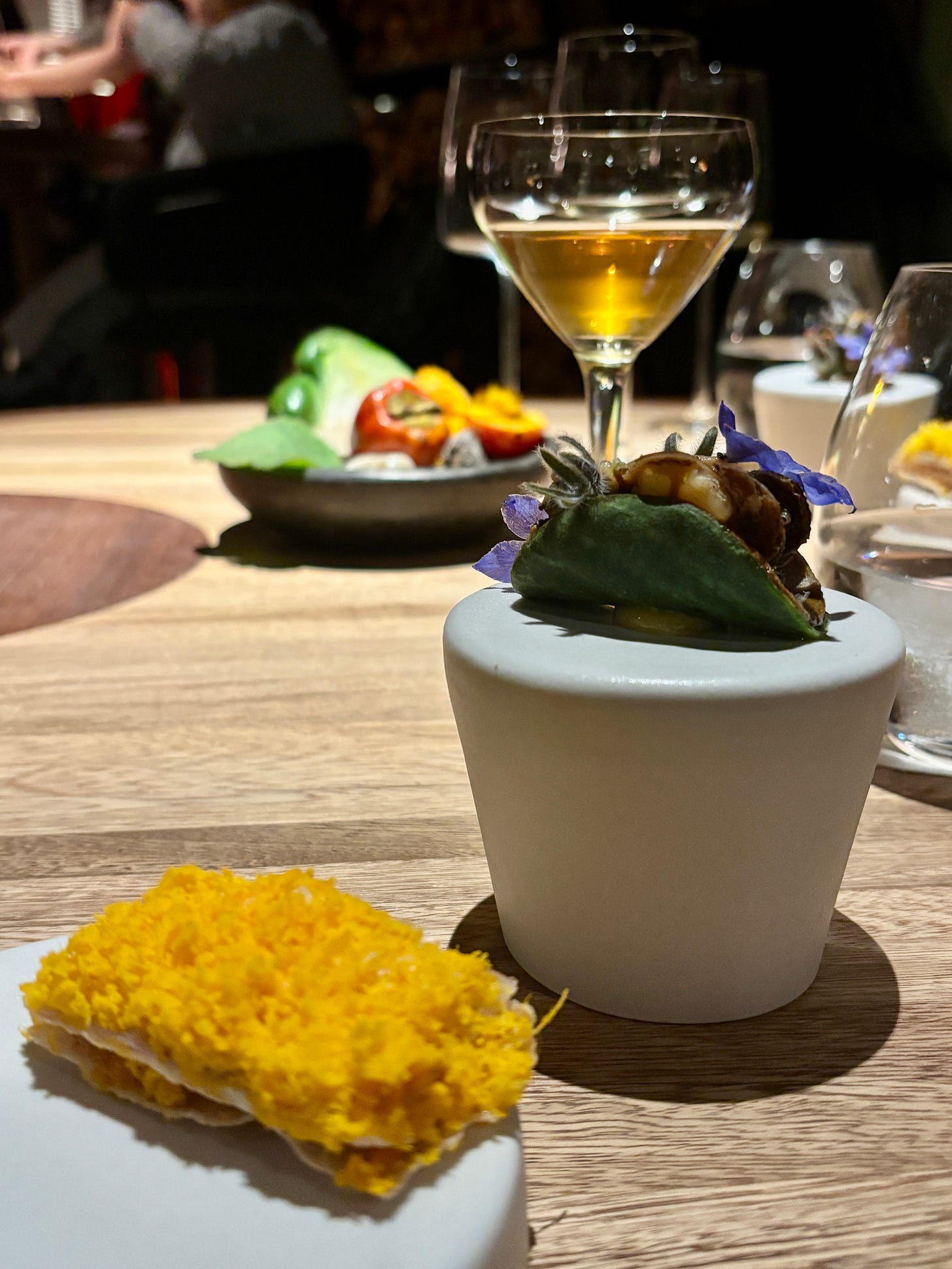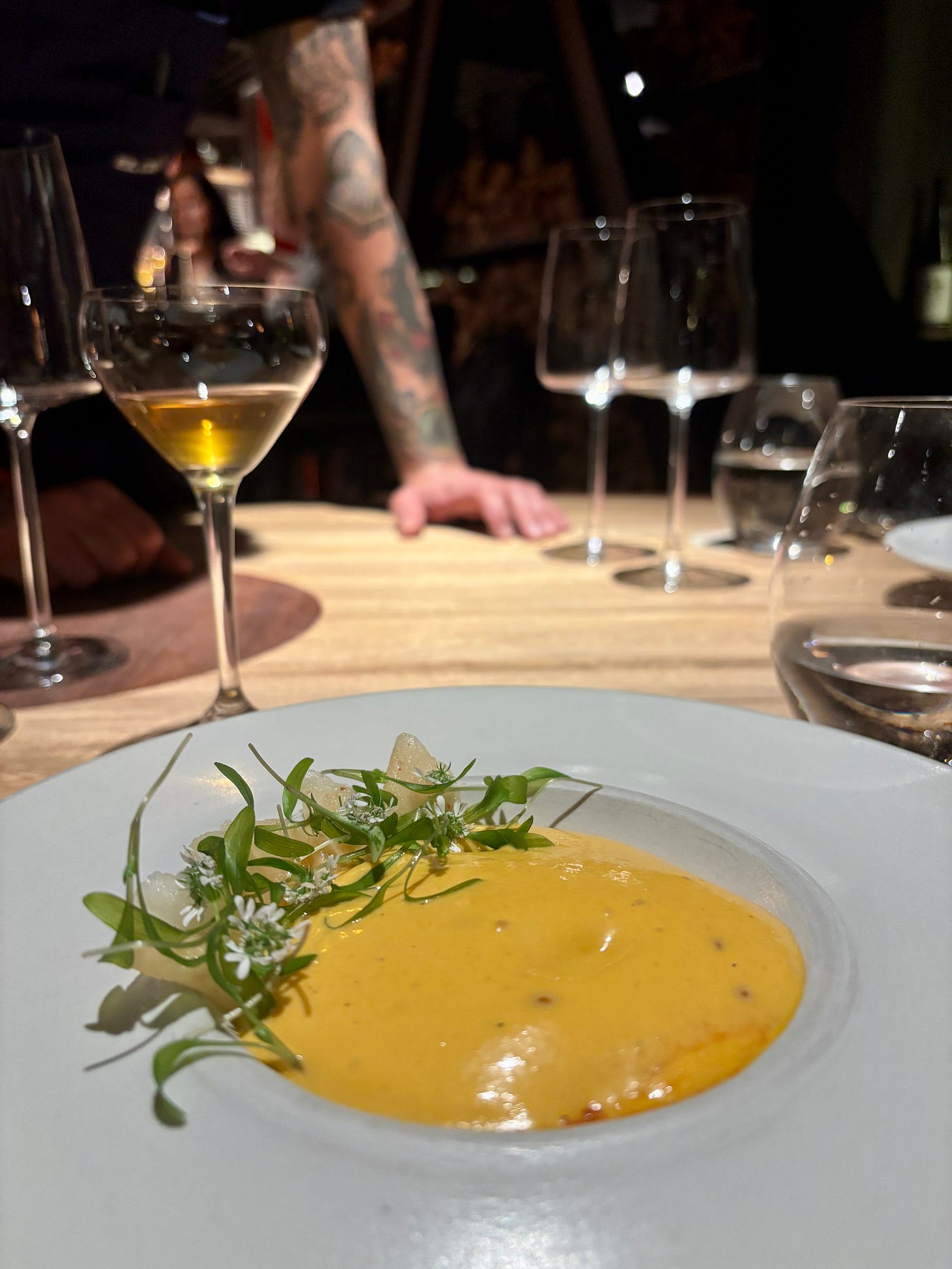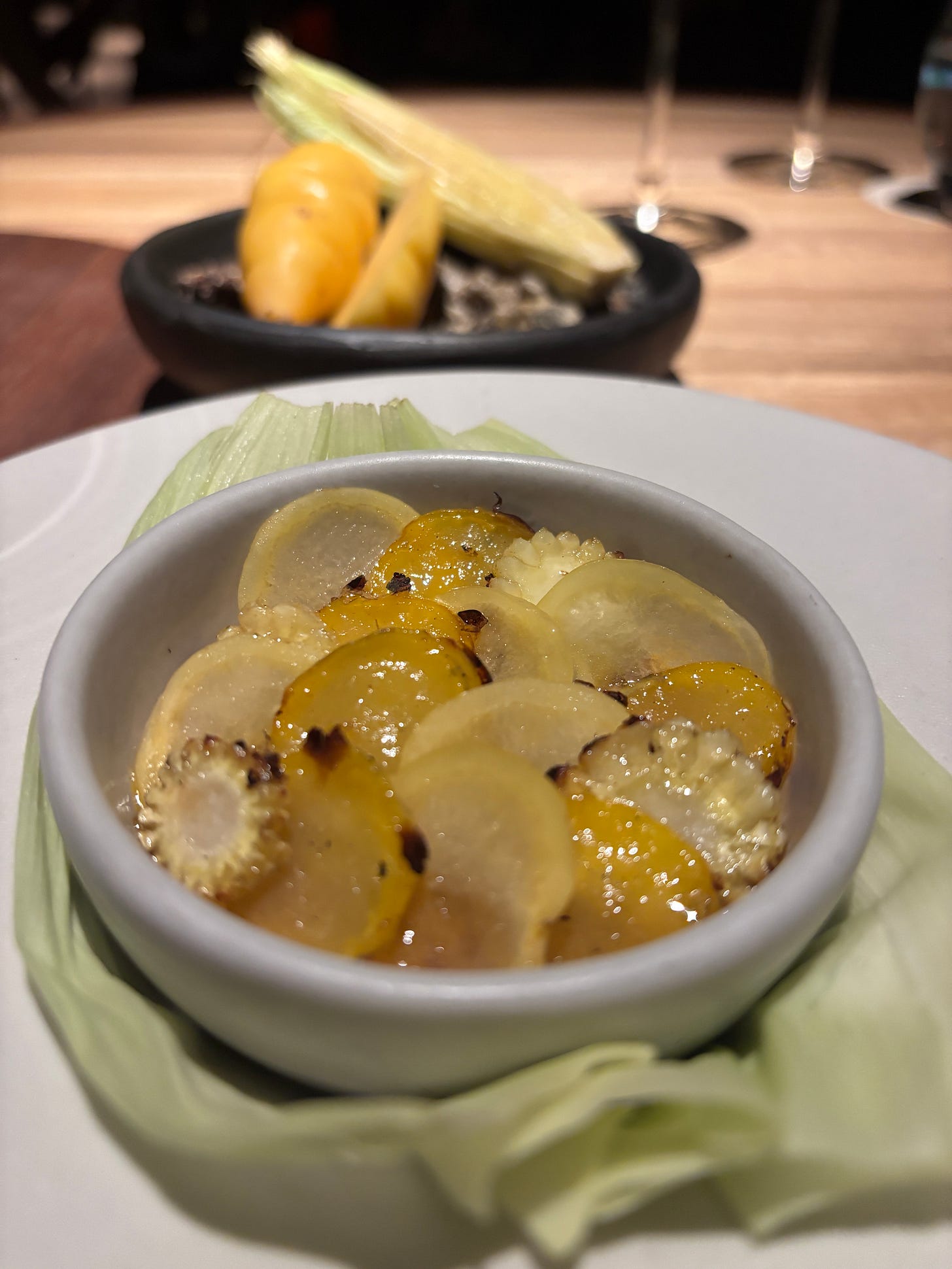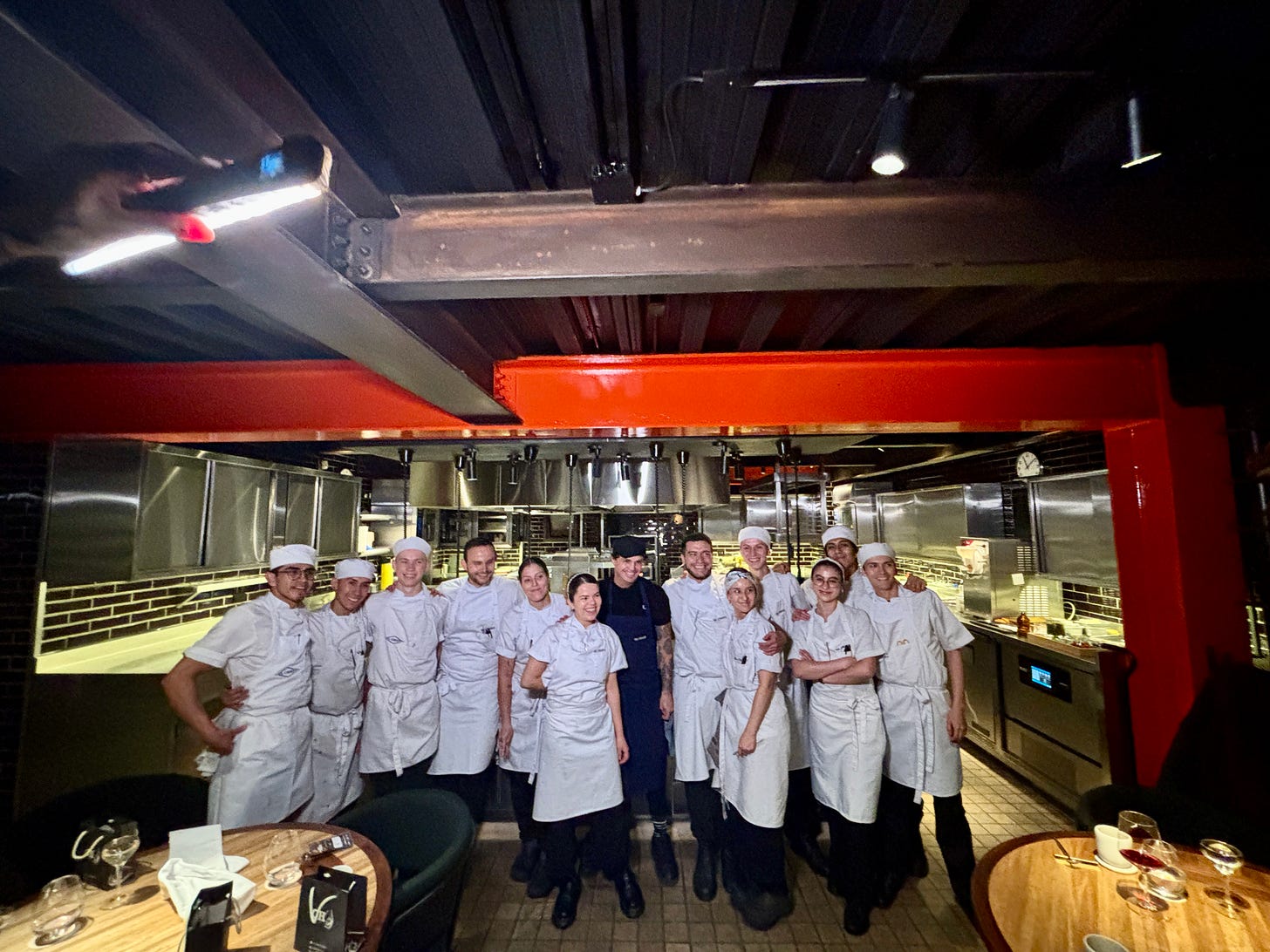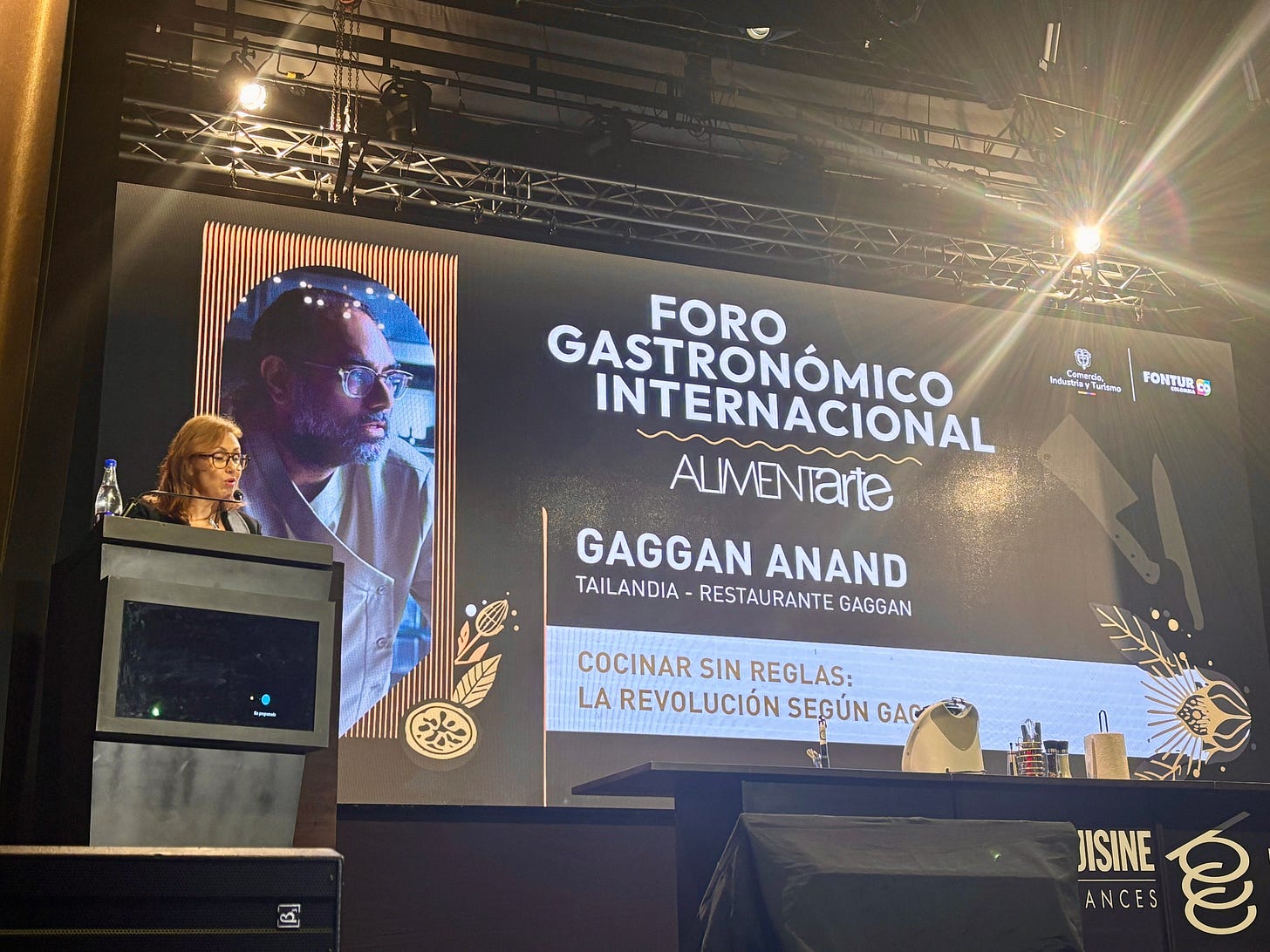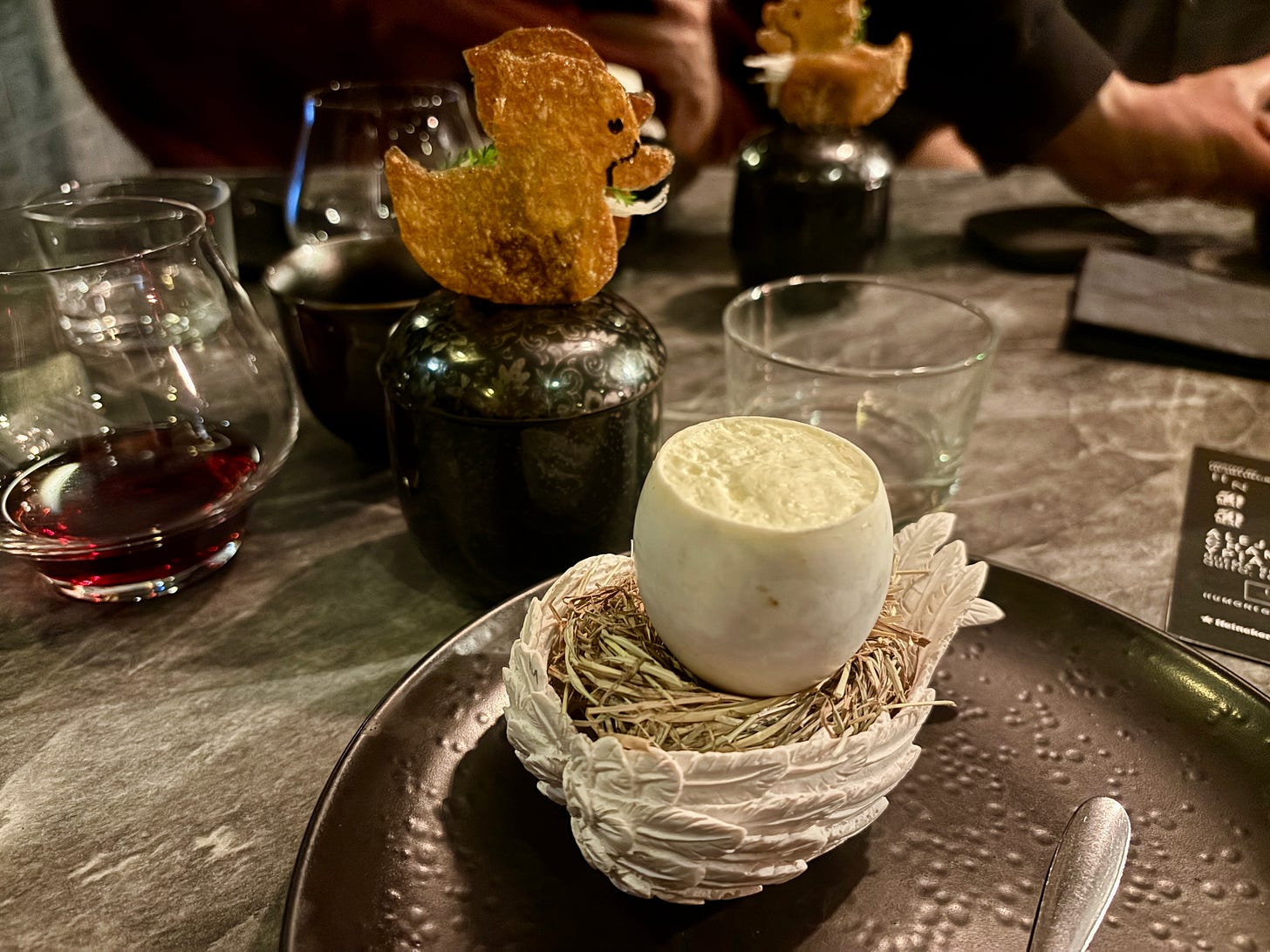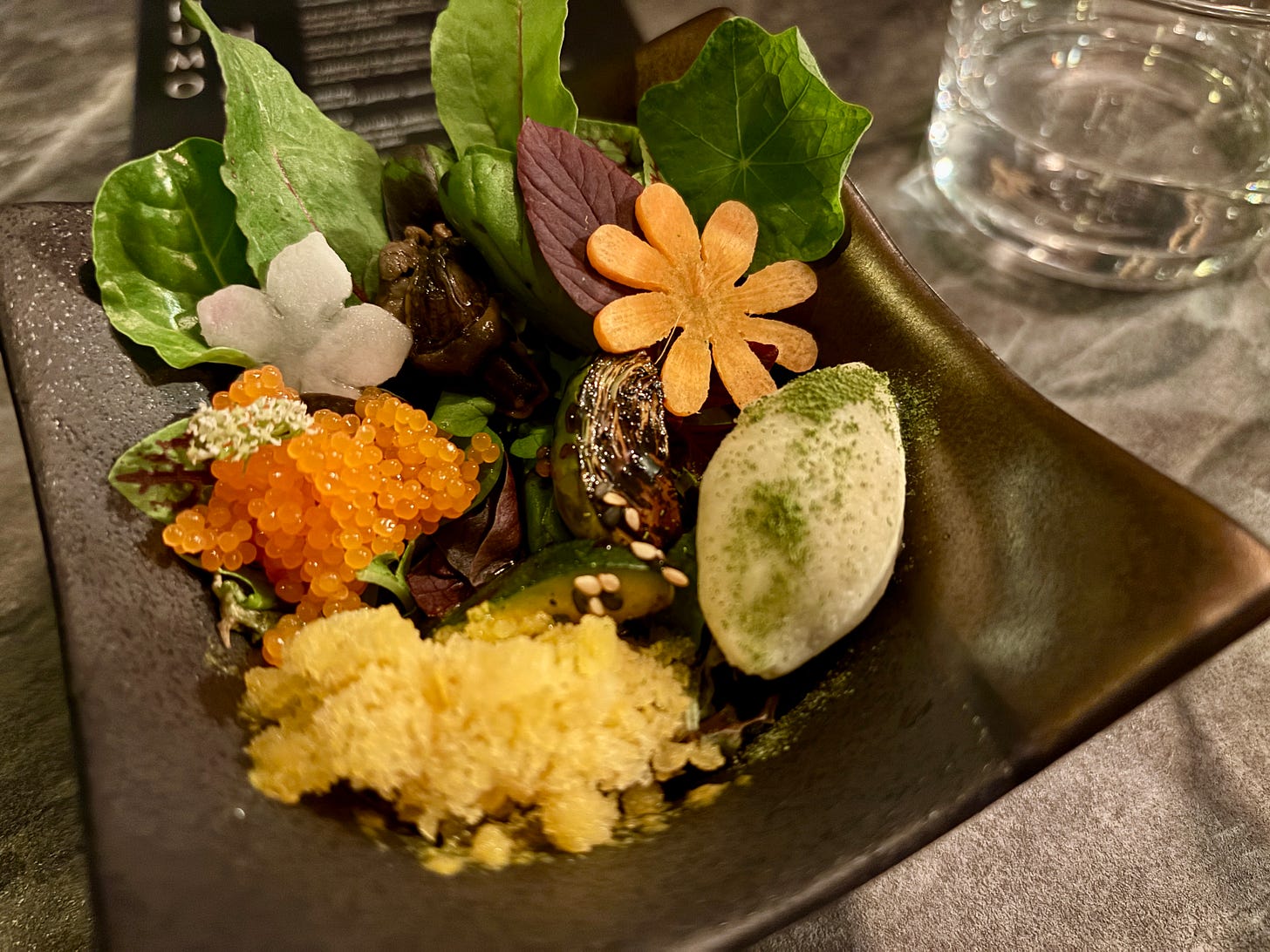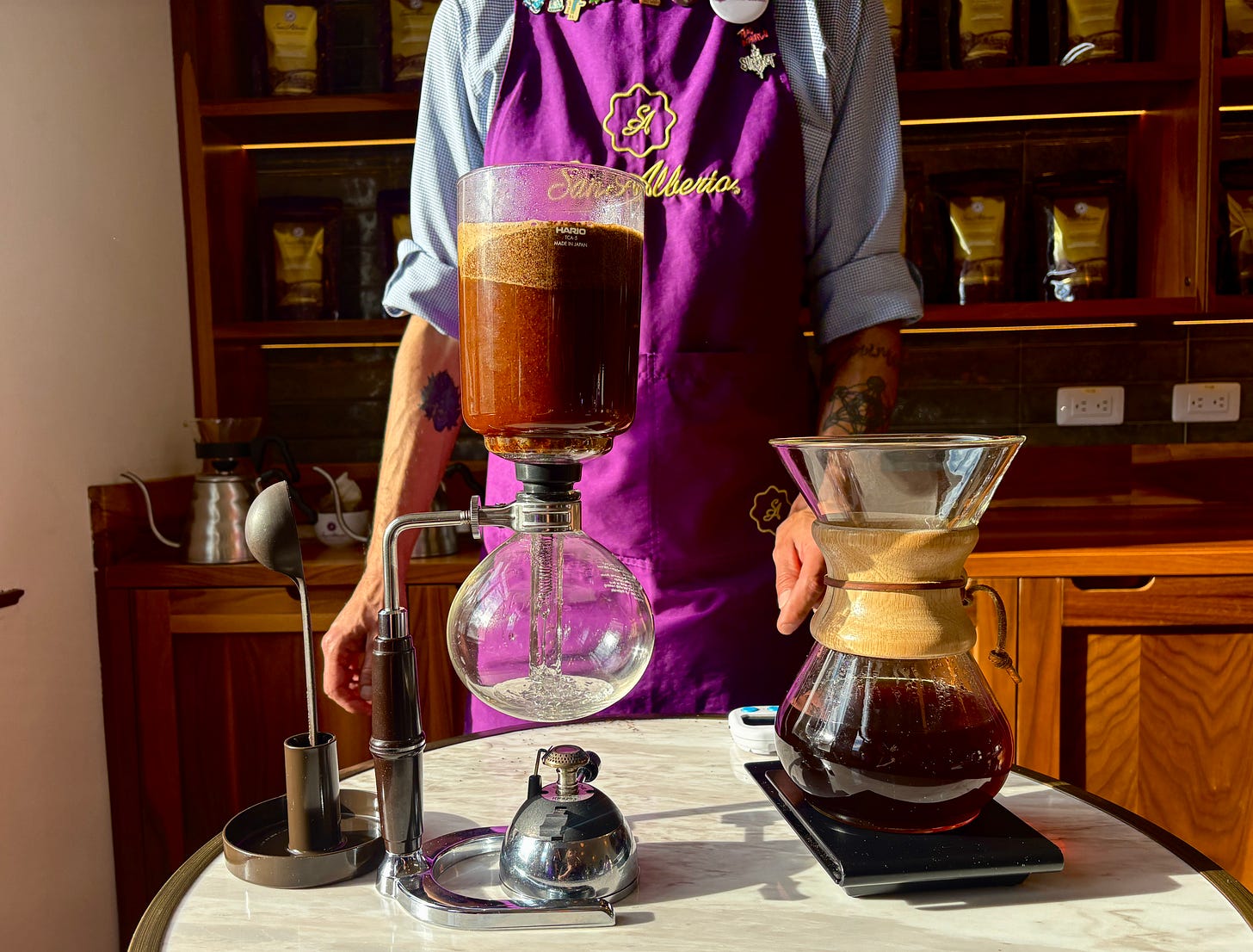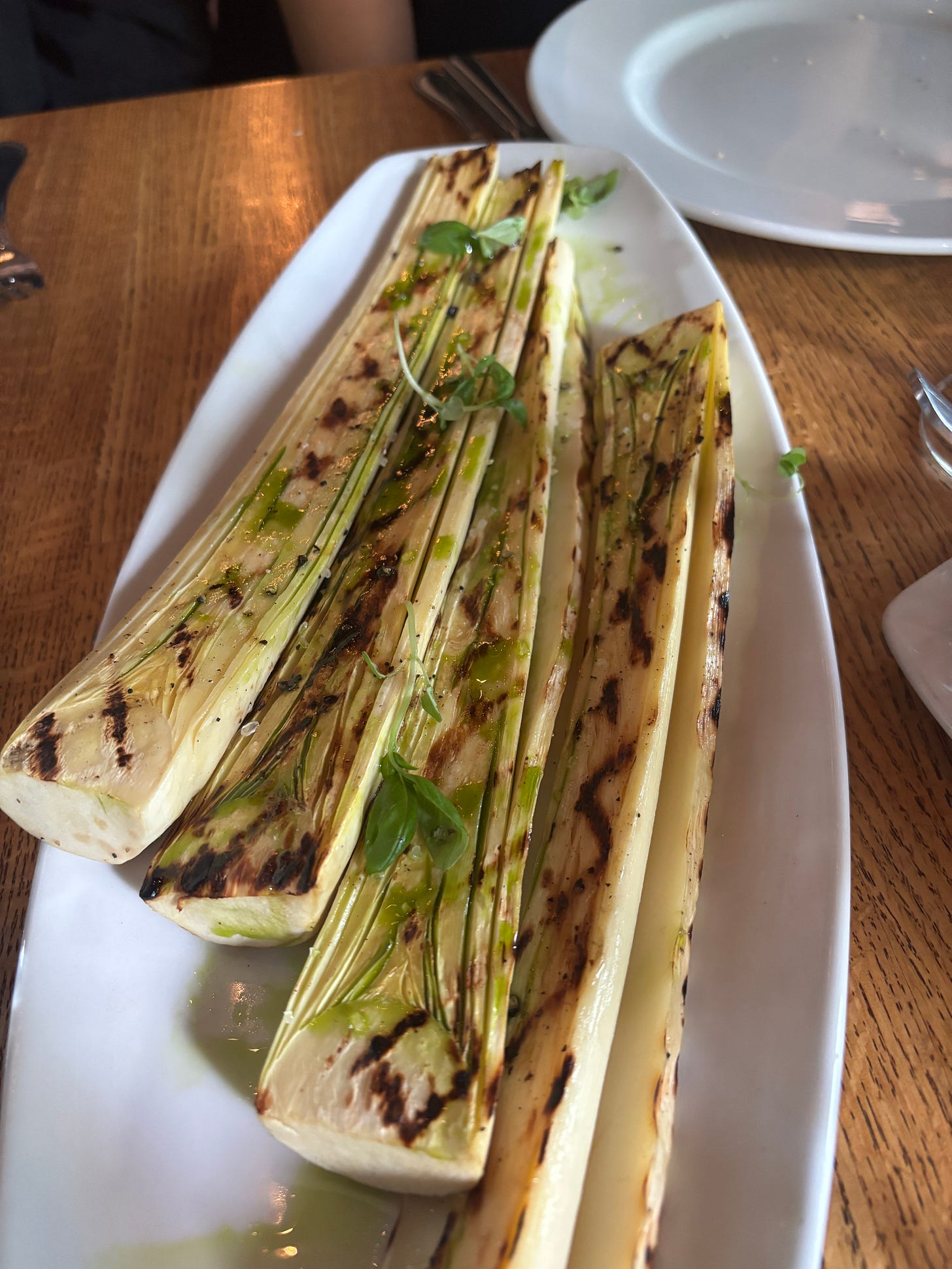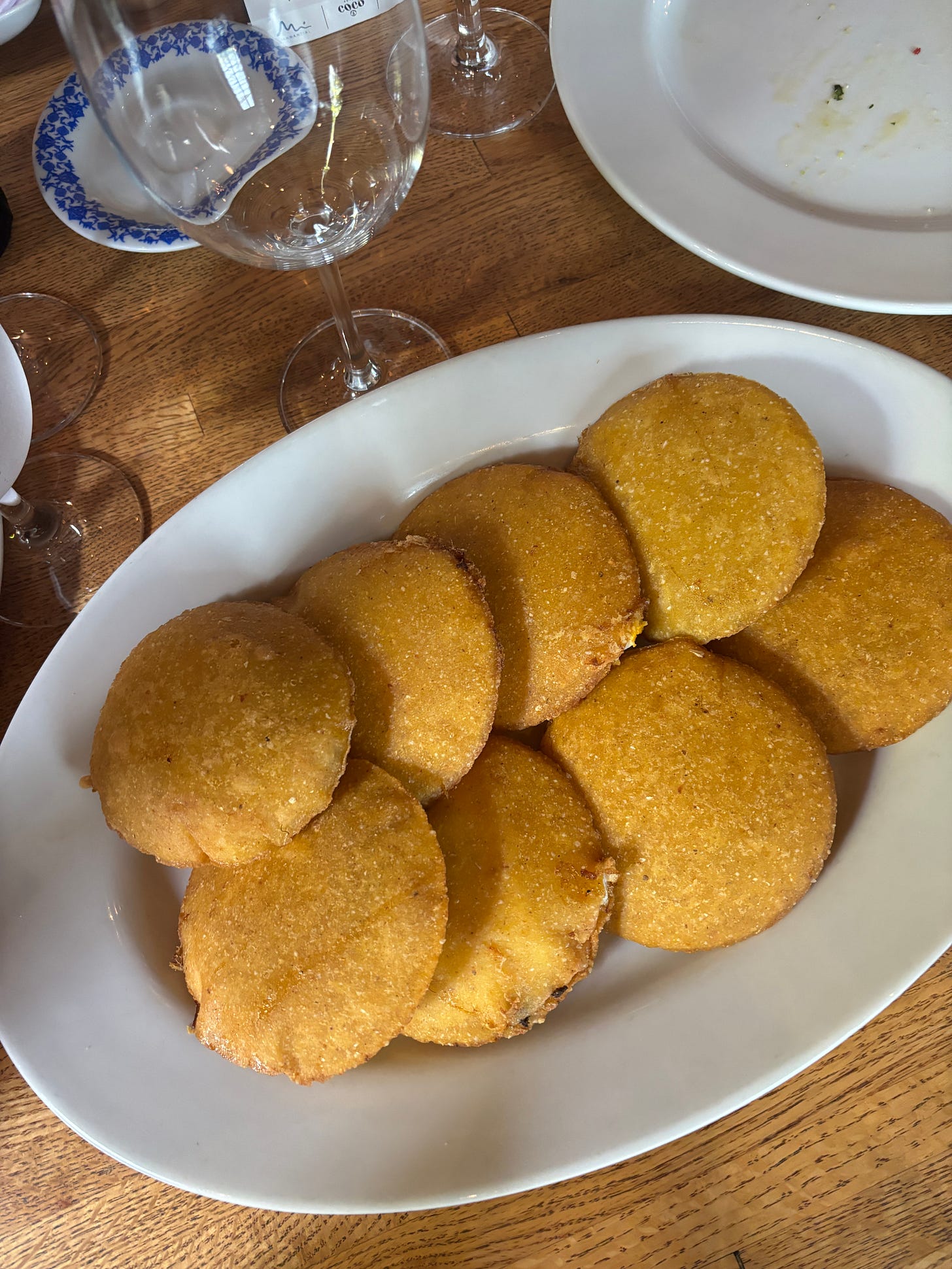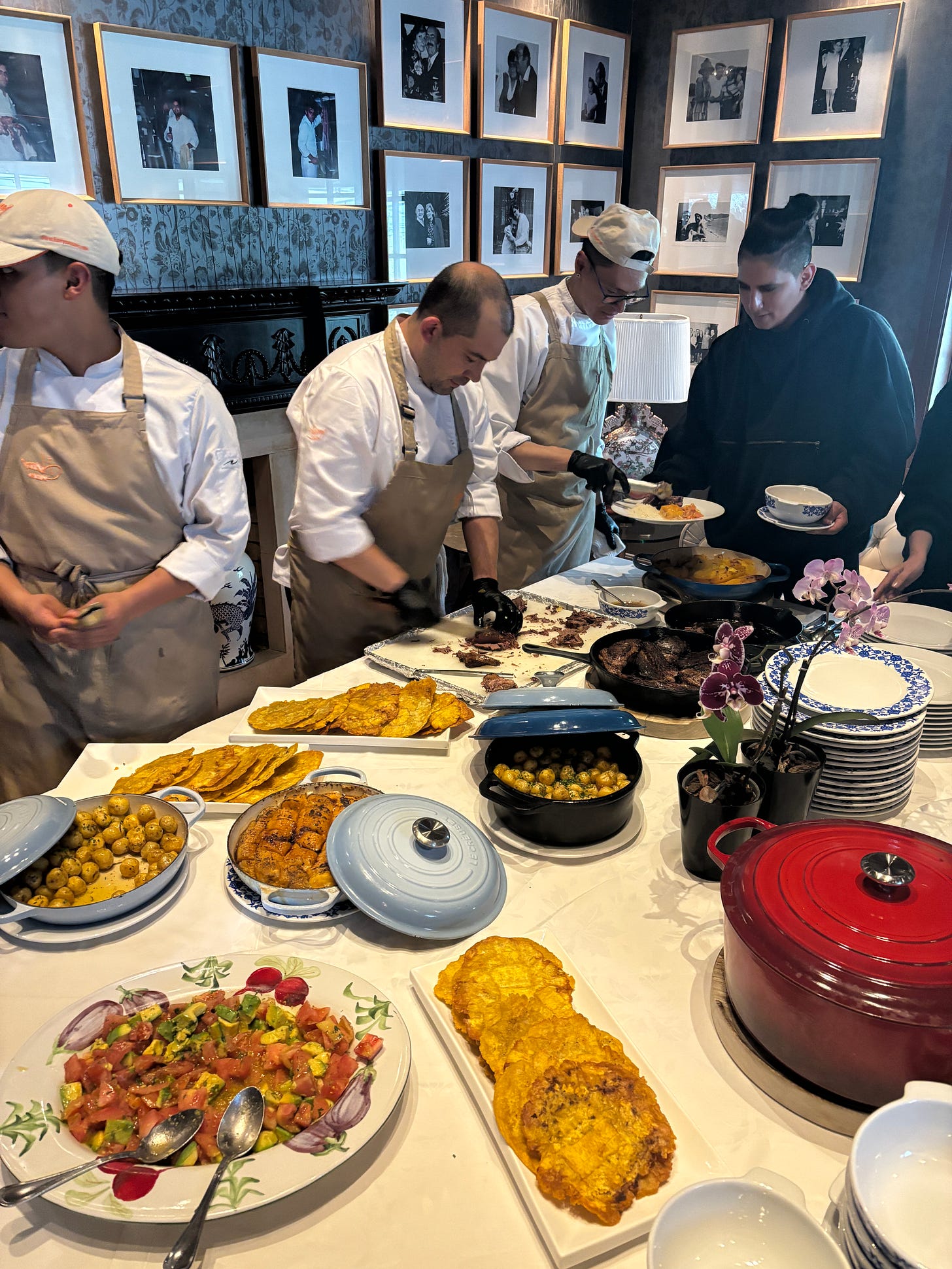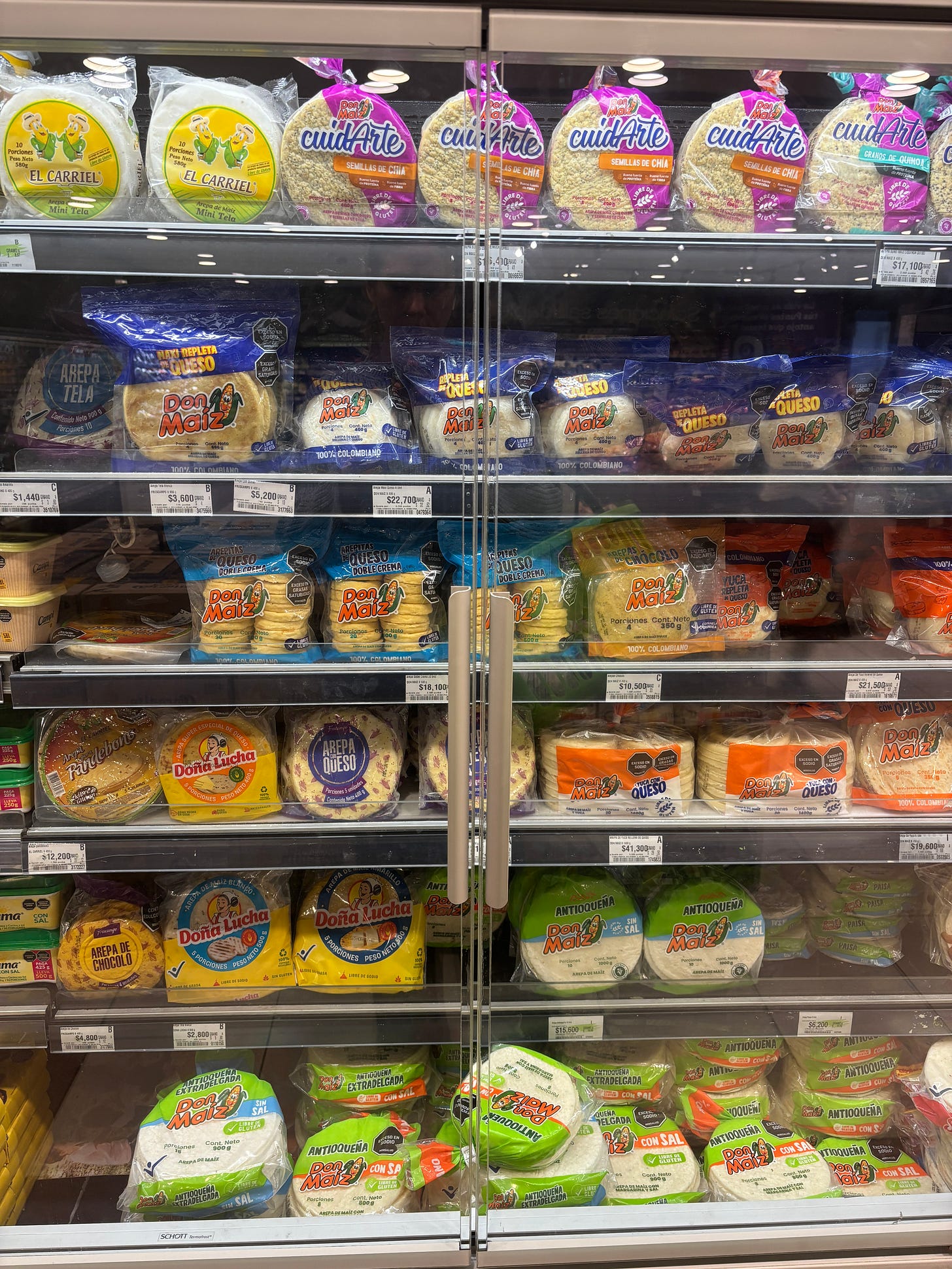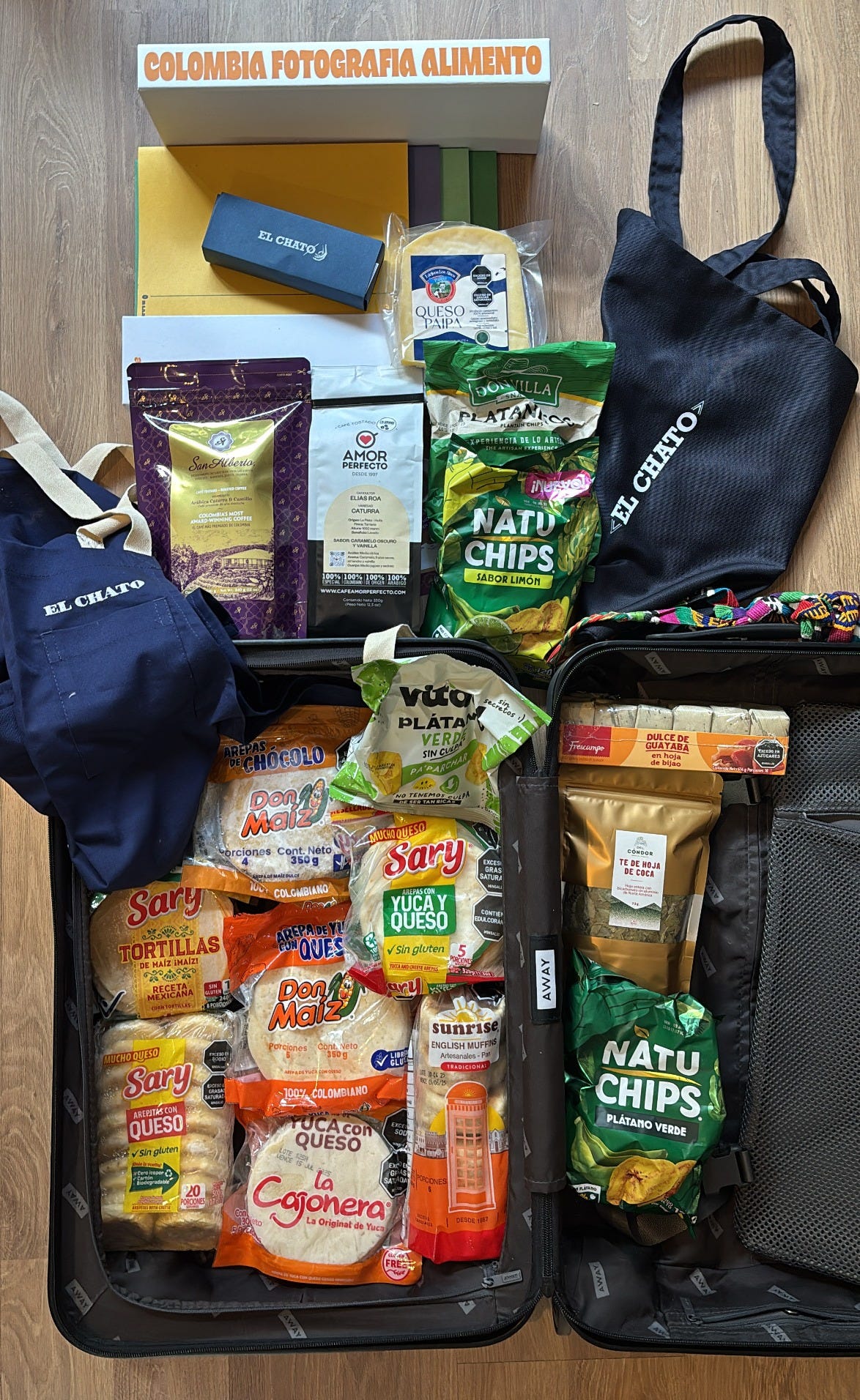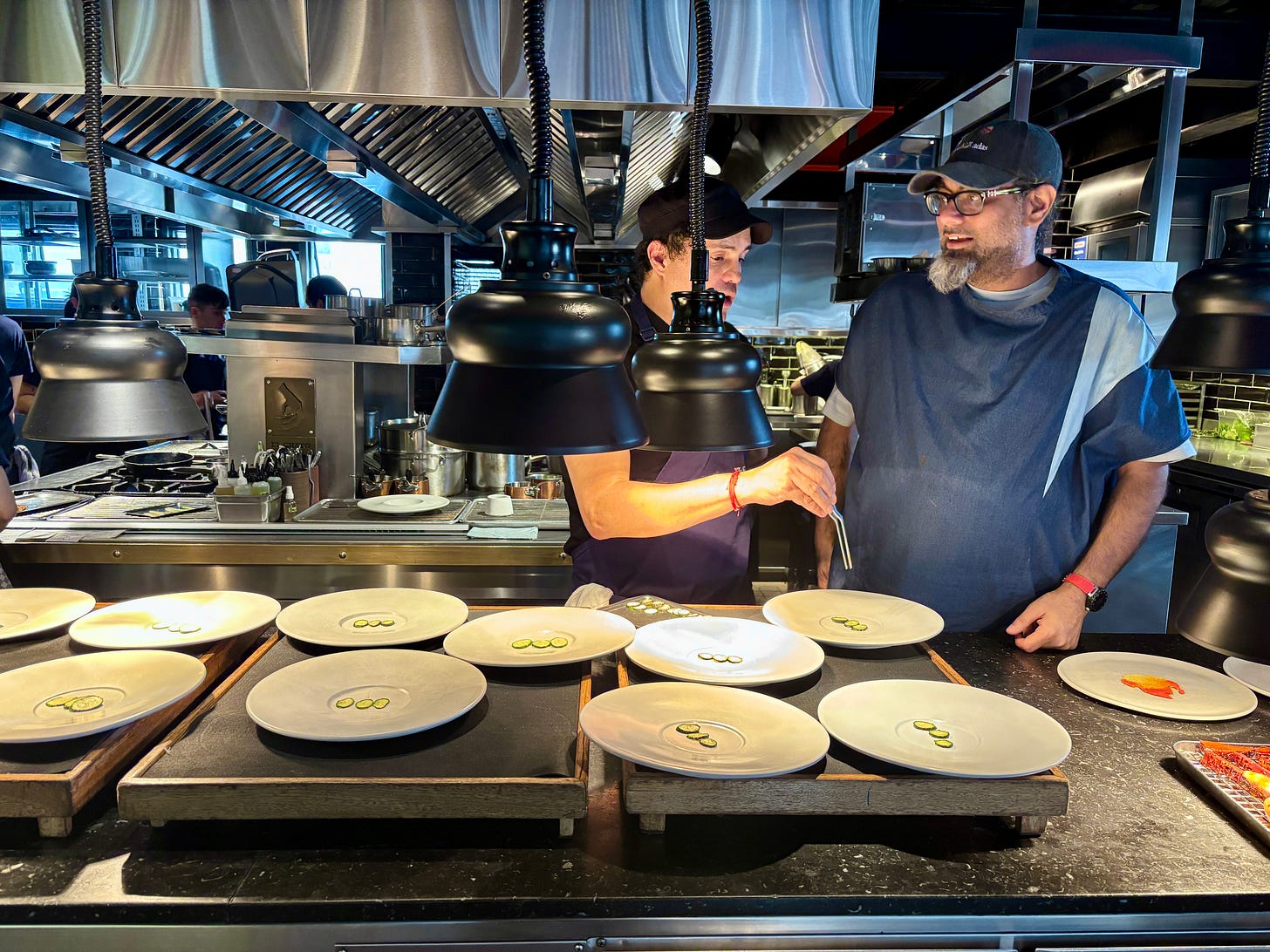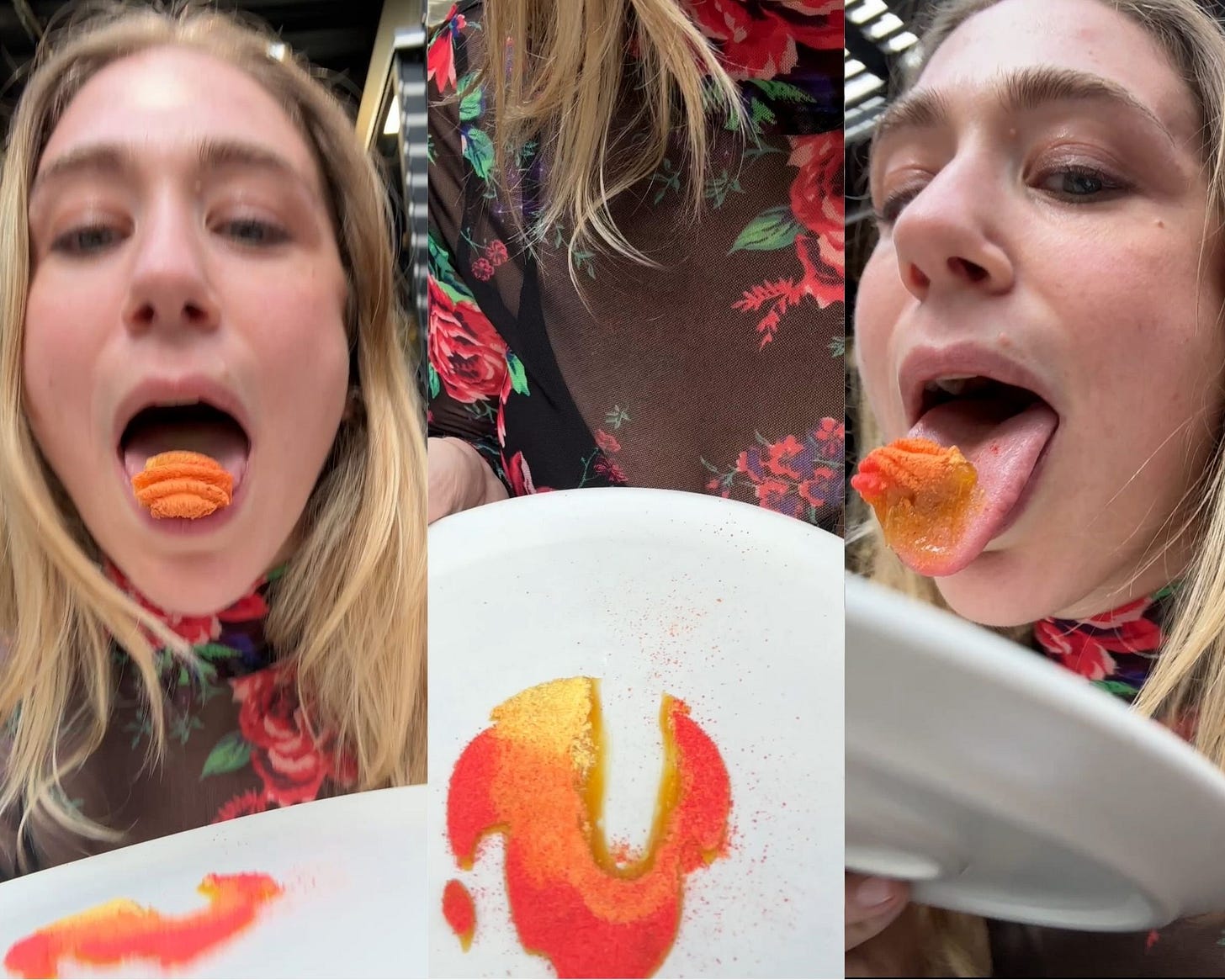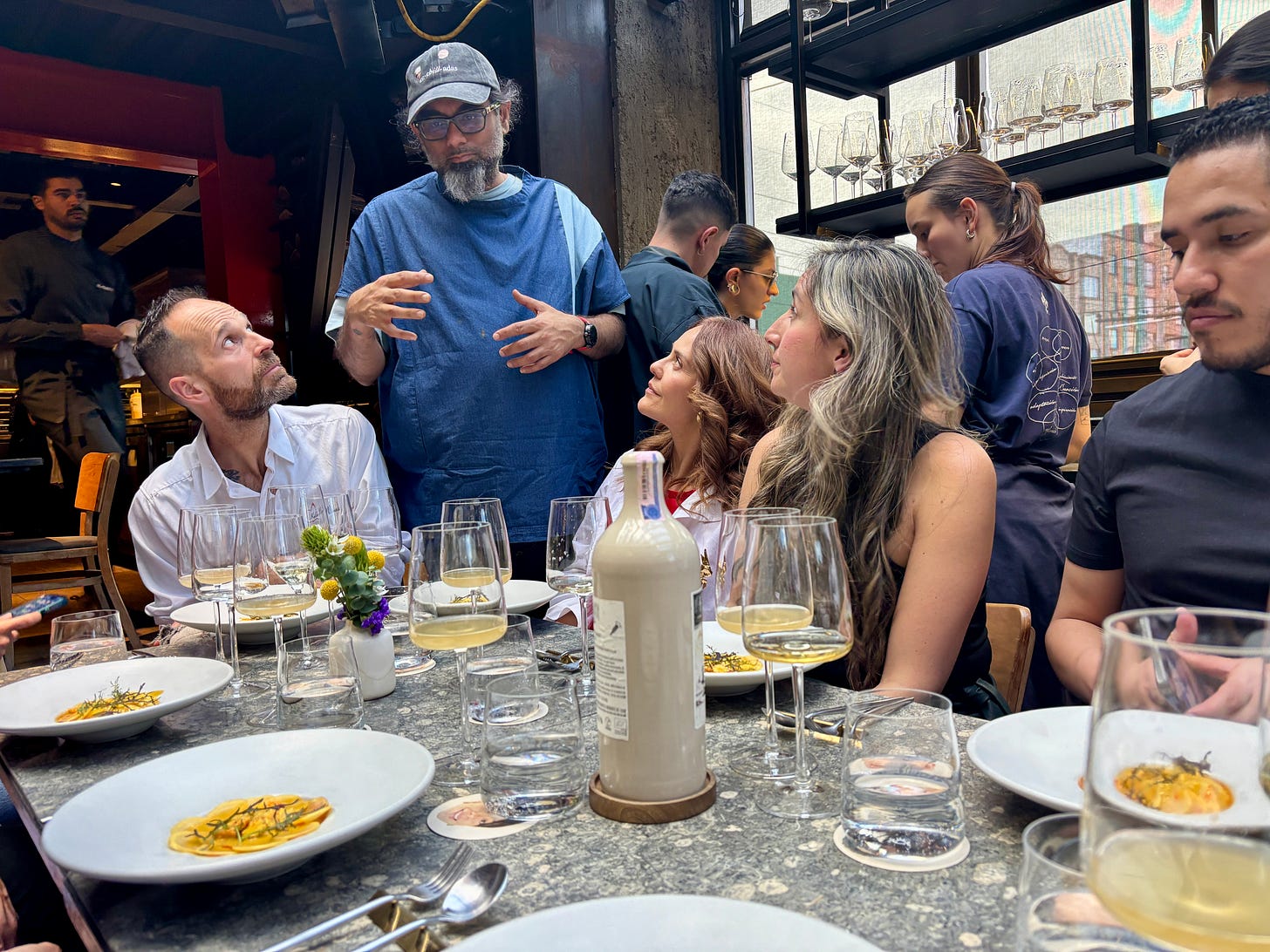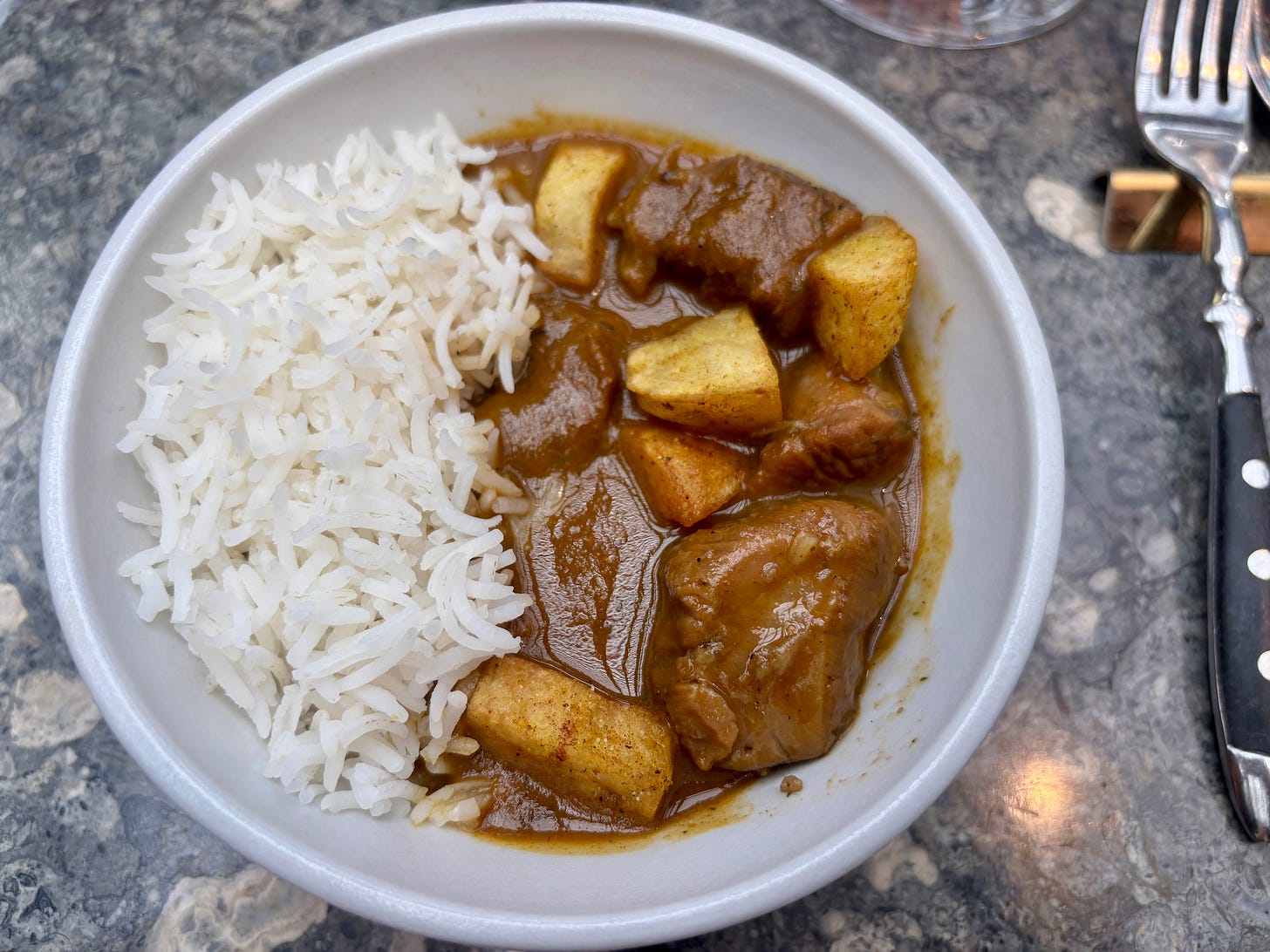I Flew to Bogotá for Lunch
Gaggan, El Chato, and a suitcase of snacks
I flew from Buenos Aires to Bogotá for lunch.
Yes, just lunch. A six-hour+ flight for one meal might sound excessive… but this wasn’t just any lunch.
Gaggan Anand, one of Asia’s most award-winning chefs (who you might recognize from Chef’s Table), known for his provocative, Broadway-style tasting menus at his namesake restaurant in Bangkok, was cooking in Colombia for the first time. A self-proclaimed rebel of fine dining, he’s built a career by breaking rules—mixing irreverence with emotion, playfulness with precision. For one lunch only, he was teaming up with Álvaro Clavijo at El Chato, one of my favorite restaurants in Bogotá. So when the opportunity arose to go, I didn’t hesitate.
Some meals are worth crossing a continent for—even if it means cramming into an Avianca seat that doesn’t recline or fit my long legs, and doing my best to forget the last time I flew with them (when the plane got struck by lightning and I ended up stranded at the airport in Veracruz, Mexico). 👉 So was that long trip worth it? You’ll have to keep reading to find out.
Bogotá greeted me with gray skies, steady rain, and manic onion-layering weather. The last time I landed here, I made the rookie mistake of diving headfirst into heavy food and strong drinks. High altitude’s no joke. But this time, I came prepared: older, wiser, hydrated, and armed with deep breaths—and some mysterious green herbal pills someone left for me in my hotel room.
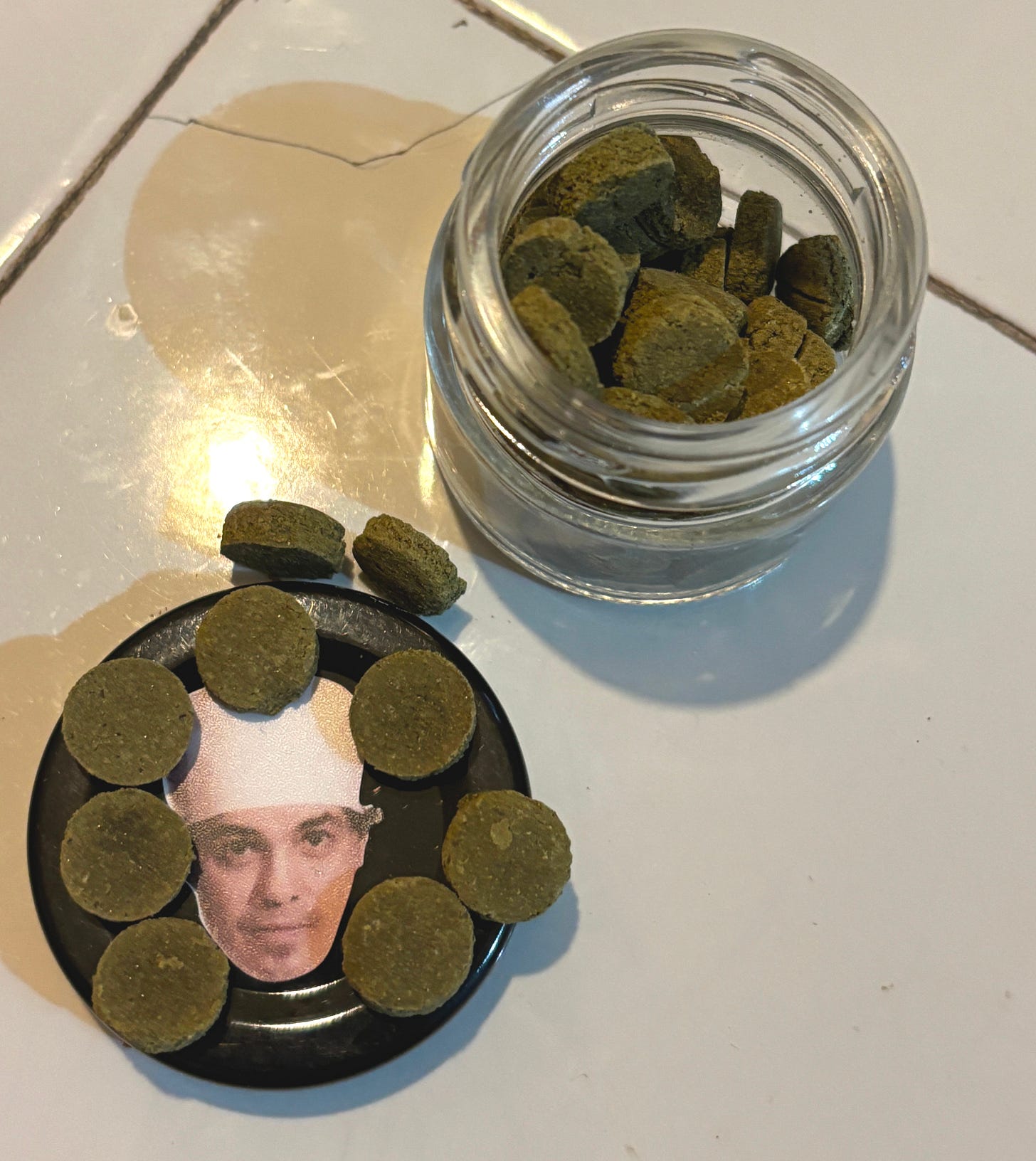
In three days, I managed to pack in plenty: restaurants, markets, bars, coffee, and the Alimentarte Forum, where some of the most exciting conversations in Latin American food went down.
Market Tourism at Plaza de Mercado Paloquemao
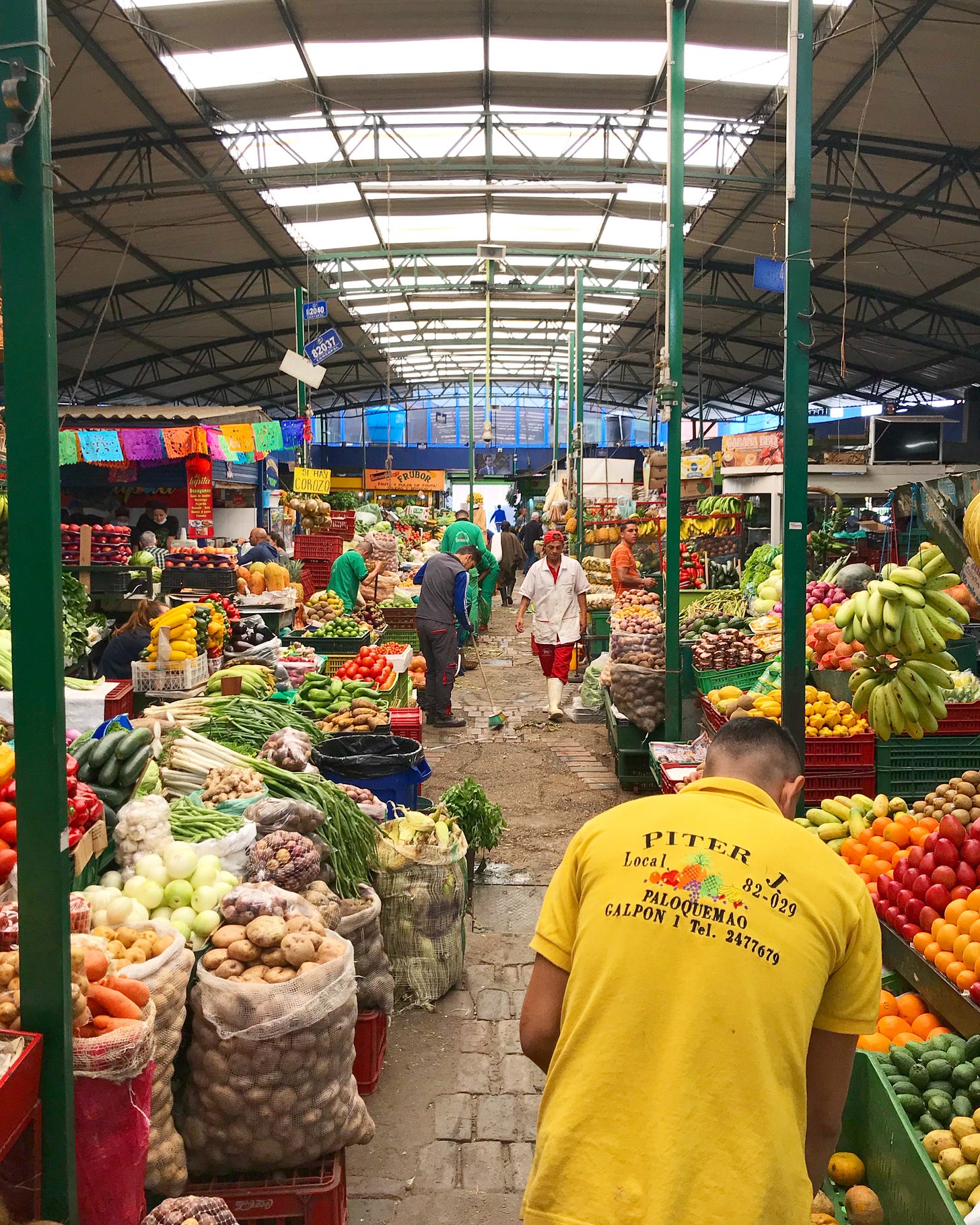
Paloquemao is where the city wakes up. It’s loud, colorful, and alive. It’s where you taste fruits you’ve never heard of and glimpse the ingredients that will shape the rest of your meals. If you want to understand a place, and you care about food, go where the produce gets sorted. “Nothing better than a market visit,” Gaggan said. “That’s what inspires me.”
Selma
If you caught me post-Santiago, and asked me about my trip to Chile, I probably complained to you about being too full. Which, understandably, no one had much sympathy for. “Poor you,” said my friends mockingly, “must be so hard, traveling and eating good food.” Fair response. But the truth is, professional eating takes skill and stamina. And sometimes, I’m just not in the mood to eat.
So for this trip, I had a plan: pace myself. Taste, don’t finish nor eat myself sick. My dad’s voice echoed in my head: “Just put down the fork, Allie.”
But then I went to Selma.
This was my second visit, and it confirmed what I already suspected: it’s one of my favorite places to eat in Bogotá. Elegant without being stiff, warm without trying too hard—a testament to chef Álvaro Clavijo’s ability to build restaurants that feel both exciting and lived-in. I went for lunch, even though I had El Chato’s tasting menu later that night. I told myself I’d take it easy. But plate after plate made that impossible. Selma makes comfort food that I want to eat.
When the crab rice hit the table, all discipline went out the ventana. Then came flaky white fish in a BUTTER sauce with cured trout roe, and perfectly grilled lomo with béarnaise and demi-glace, served alongside fries that dared me to resist. I forked around the table between dishes like it was my last meal. I couldn’t stop, no brakes. Fork, bite, mmmmm, fork, bite, mmm, and so on and so on.
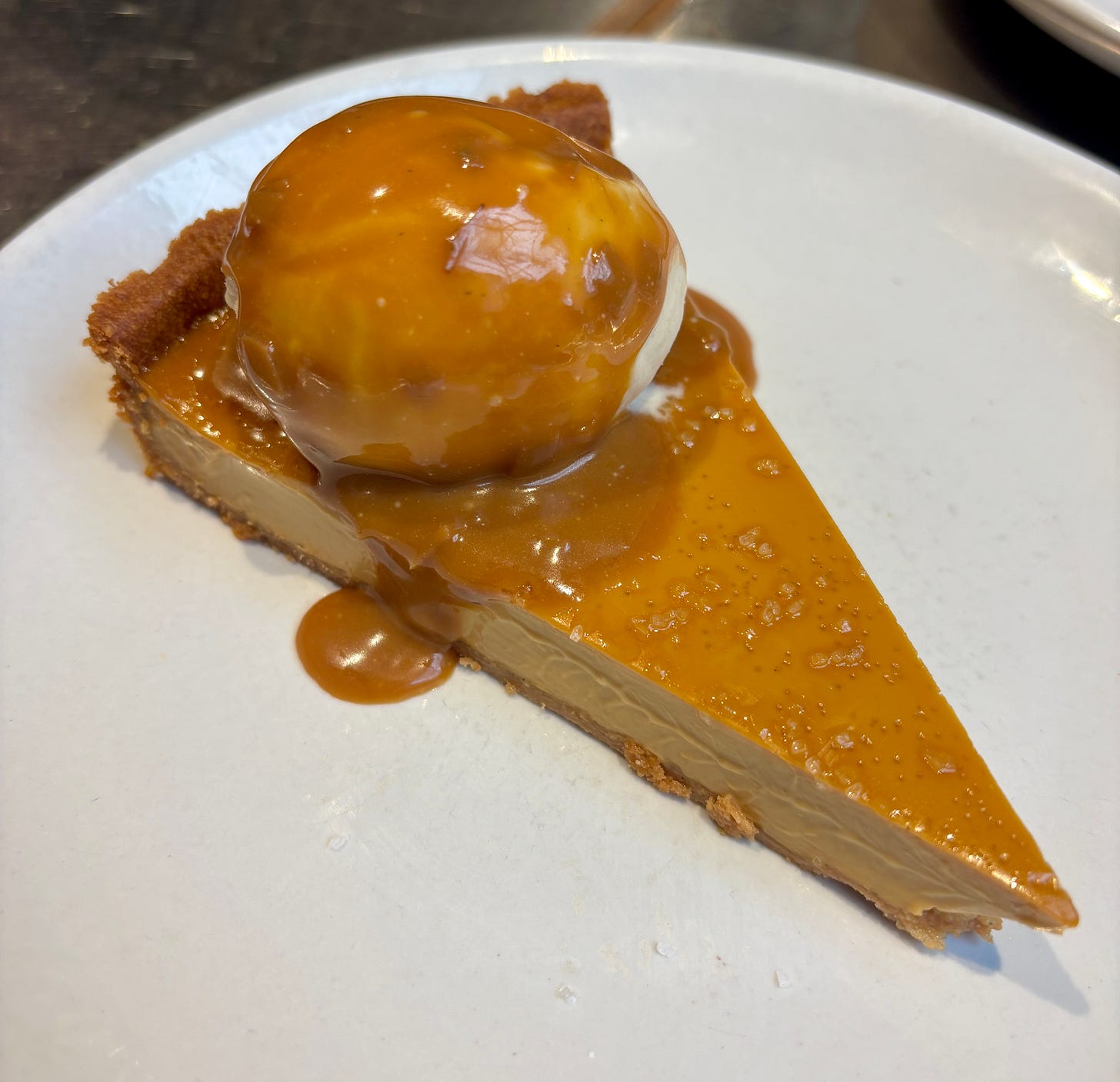
El Chato’s New Tasting Menu
Upstairs at El Chato, the walls hold the essence of the menu itself, lined with glowing jars of ferments, spices, and pickles — an edible library of Colombian biodiversity. These jars aren’t just decoration. They’re the flavor archive, the building blocks behind nearly every dish.
Chef Álvaro Clavijo’s new tasting menu reads like a love letter to Colombian ingredients: cubio, guasca, chontaduro, zapote, mambe. Most I’d never even heard of. With each course, the servers place the raw ingredients on the table beside the finished dish, a kind of edible show-and-tell, especially helpful when you're tasting something you didn’t even know existed.
The food swings between delicate and bold: shrimp with chontaduro, carantanta, and coconut, a crab tamal in aged corn dough, veal tongue with spicy hormiga culona (which brings real heat, in case eating budunkadunk big ass ants didn’t feel thrilling enough on its own). And the mango and manzanilla non-alcoholic drink pairing was so good I’d buy a case and keep it in my fridge if I could.
The details feel intentional but not overthought: the elegance of the plating, the quiet choreography of the kitchen, the confidence of the service. El Chato is one of the few fine dining restaurants that doesn’t feel stuffy — it’s playful, relaxed, human, but still polished. Even the coasters feature staff members’ faces.
It’s worth noting that while many courses were exceptional, a few didn’t land quite as well — like the tuna tartare — which isn’t unusual in a tasting menu where so many flavors are competing for your attention. Since it was a brand-new menu, the pacing felt like it was still finding its rhythm, especially when it came to explaining both drink pairings and the food. It’s an information overload. Do I eat? Take content? Listen? #Foodwriterwithanxietyproblems.
Even the playlist pulled me in, I was Shazamming tracks mid-bite to hold onto the vibe. Because that’s what this spot does best. It doesn’t just serve food, it builds a world. One that’s inventive, rooted, and worth getting lost in for a night.
Alimentarte International Gastronomic Forum
At the Alimentarte Forum, some of Latin America (and the world’s) most exciting culinary voices gathered to talk about what matters: identity, sustainability, mental health, labor, and the power of food to create change. Gaggan (India & Thailand) opened with a yogurt explosion and the story of how one 30-cent dessert from 7-11 in Bangkok changed his life. Eneko Izcue (Spain) from the Basque Culinary Center spoke about ancestral techniques as tools for innovation. Tássia Magalhães (Brazil) reflected on leading an all-women kitchen. Jaime Rodríguez (Colombia) from Celele talked with journalist Ana Rivero about using global recognition as a platform to grow, not just for himself, but for his team, non-profit organization, community, and country. Julio Báez (Argentina) from Julia reminded everyone that how you treat your staff is just as important as what’s on the plate.
It wasn’t the usual echo chamber. The talks were honest, the room full of culinary students scribbling notes, raising hands, asking engaging questions. It was inspiring.
Lately, I’ve been asking myself where I fit in this industry—not just what I want to create, but what I want to contribute to. What systems need rethinking? What conversations are missing? This forum didn’t hand me answers, but it pushed me to start framing better questions. The kind that can guide whatever I choose to build next.
Humo Negro
One of the nicest parts of this strange, wonderful food world is when you finally get to sit down at the restaurant of someone you’ve met in other contexts between blurry after-service parties and half-sober conversations. I’d crossed paths with Jaime Torregrosa before, but eating at Humo Negro, his own space, gave me the chance to step into his realm.
The restaurant pulses with personality: walls filled with art from local artists Jaime trades with—he feeds them, they give him pieces. That spirit of exchange runs through everything here. Before opening Humo Negro, Jaime was head chef at El Chato, and staged at places like Faviken, Grace in Chicago, and Atelier Crenn. You can taste that training and curiosity in the dishes—sharp knife work, layered flavors, smart ideas.
The omakase-style tasting menu pulls from the restaurant’s greatest hits since it opened in 2021, each dish paired with a cocktail by Manuel Barbosa, one of Bogotá’s best bartenders and Jaime’s creative partner. These aren’t just pairings, they’re part of the storytelling—creative, intentional, and delicious. I left Humo Negro happy and with ganas to try more of their food.
More Bars and Bites!
Jardín Tragos y Pasteles
I’m not even a dessert person, but these were phenomenal. “Tragos y pasteles que van genial juntos”—they say it, and they prove it. The tasting menu surprised me in the best way, and somehow, sipping cocktails and eating delicate, layered sweets in the middle of the day felt totally normal. Tucked inside a greenery-filled courtyard in Chapinero, it’s part café, part garden bar, and fully a place I’d hang out at all the time if I lived nearby. Open from noon to midnight.
Decadente
Loved this cozy, low-lit bar across from El Chato and Selma, owned by the same team behind Jardín Tragos y Pasteles. Tiny space, mighty drinks, excellent music. When I walked in, it was packed with chefs and speakers from the Alimentarte Forum—one of those perfect nights of good cocktails, loud music, and familiar faces in a foreign city.
San Alberto is Colombia’s most-awarded coffee, and after tasting it, I get why. The beans come from the family’s farm in Quindío, and the owner himself walked us through each preparation—Chemex, siphon, espresso. No gimmicks, just technique, flavor, and a deep respect for the craft.
Lunch at Harry Sasson felt like a masterclass in how to do legacy right. We sat above the main dining room where light filtered through the glass-and-steel atrium, watching the chefs below move in a quiet rhythm—my favorite kind of live entertainment, especially at a place with this kind of history. The first courses arrived family-style: arepas with morcilla and egg, yuca bread, fresh hearts of palm, chorizo, crab salad.
Then came the banquet: patacones the size of dinner plates, coconut rice, cazuela de mariscos, grilled meats, avocado salad. Generous, confident, deeply rooted in place. A reminder that when a restaurant knows exactly who it is, it doesn’t need to chase trends.
Supermarket Haul
It wouldn’t be a trip if I didn’t squeeze in a supermarket run. I always ask friends from whatever country I’m in what they miss most from home—and what I should bring back (for me and for them). In this case, they told me to stock up on arepas de yuca con queso and arepas de choclo (like sweet corn cachapas), so I did. I also grabbed some more coffee (obviously), dulce de guayaba, and a few bags of plantain chips—even though someone tried to ruin the moment by telling me they go straight to your hips. Whatever, Debbie Downer. Let me stuff my face with chips de plátano in paz. I’ll be back in Colombia this week, and I plan to stock up again.
The Main Event: Gaggan x El Chato
This is what I came for: Gaggan cooking at El Chato. I’d eaten at his restaurant in Bangkok last year, where dinner feels more like a theatrical performance than a tasting menu. I wasn’t sure how it would translate in Bogotá—these one-off chef collabs don’t always work. But it was still Gaggan: unique, emotional, unforgettable. And FYI: It was the kind of meal that reminds you that the long flight was worth it.
He opened with his signature yogurt explosion, the same dish he demoed the day before at Alimentarte. A single spoonful that, as he says, made him millions… and lost him millions. Then came the greatest hits: Lick It Up, plated in the shape of a flame emoji, made from passion fruit and fiery chile. Unlike in Bangkok, the Kiss song didn’t blast in the background, but the energy was there. I tried to film myself doing it—last time I licked up a carrot plate, and regretted not getting it on camera. Turns out licking and filming at the same time is harder than it looks. I’ll need to work on my technique, or at least bring a tripod next time.
There were ten courses, with standouts like sago shakarkandi chaat, aguachile de cangrejo with smoky corn and cubio, sticky rice with guanábana, and a tender lengua with pepper and hearts of palm. But the curry—rich, layered, unapologetically bold—was the heart of it. Before serving it, Gaggan circled the dining room asking what size we wanted: small, medium, or large? I’d been to Gaggan before, so I knew the drill. There’s only one answer: large, obvioooooo.
Then he asked who wanted to take some home. Even stuffed, I raised my hand. Because when Gaggan makes you curry and offers leftovers, you say yes… even if you forget it in the hotel mini fridge. I just hope whoever found it appreciated Asia’s best chef’s curry.



